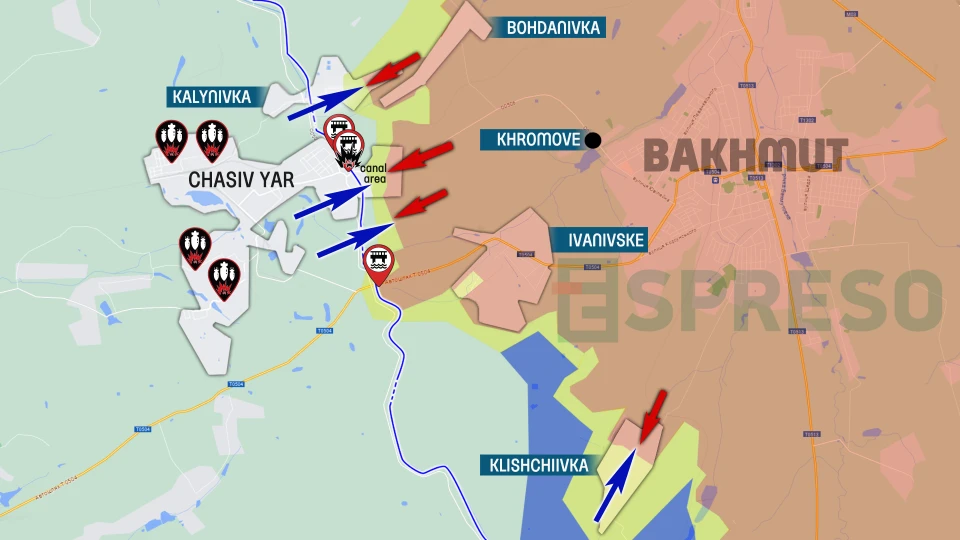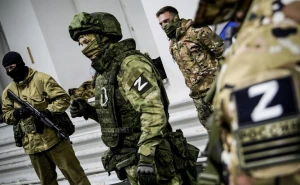
Creeping offensive strategy and state of Ukraine's defense industry. Weekly military review
Ukrainian military analyst Serhiy Zgurets has discussed this week's front line events and defense industry capabilities with Vladyslav Belbas, CEO of Ukrainian Armor defense company
Frontline situation
The invading Russian army continues to implement a creeping offensive strategy. These are constant attacks in numerous areas, primarily with manpower with limited use of armored vehicles, but with the support of aviation and artillery. The Russian manpower is being spent, sometimes in a ratio of 10 to one, when we talk about Ukrainian losses. This is what Ukrainian military says. That is, the Russian loses are 10 times more, but they recover their losses thanks to their reserves and continue to conduct assaults, hoping to deplete Ukrainian forces. The intensity of the fighting during the week was quite high. It ranged from 100 to 140 combat clashes per day. On June 27, there were 148 clashes, and Ukraine had the peak number of clashes last year, when there were 170 clashes during the fighting for Bakhmut.
Of course, the Russians are trying to put pressure, but there is news that Ukrainian Armed Forces are also conducting successful counterattacks. In particular, this applies to the Lyman direction, where the Russian forces wanted to push Ukrainian troops beyond the Zherebets River. Now we have information that part of Ukrainian territory has been liberated in the area of Terny and Yampolivka. This is the Lyman direction, where Ukrainian counterattacks took place. The 95th assault brigade, 60th, 63rd, and 93rd mechanized brigades took part in the attack. These actions took place a little earlier, but now the information has become public.
There were also changes in the Kramatorsk direction. There was information from the spokesperson of the Khortytsia grouping of troops that they managed to push the Russian troops out of the Novyi district in the area of Chasiv Yar.
We know that for several months the Russian forces have been attacking Chasiv Yar and one of the central districts of Canal, where they have been conducting frontal attacks. On June 27, Nazar Voloshyn said that the enemy was pushed out of this area, although today the DeepState community said that the Russian forces are in the area, but do not fully control it.

Photo: map of fighting near Chasiv Yar
We can say that the situation remains extremely dynamic in this area. The Russian forces are trying to put pressure on Ukrainian defense. The two most difficult and hottest directions are Pokrovsk and Toretsk. They account for two-thirds of combat engagements per week and even per day.In the Pokrovsk direction, the Russian troops probably perceive this area as the main direction on the eastern front. Here, the Russians are going to advance from Novooleksandrivka, where Ukrainian 110th Brigade is holding the line, to the Kostiantynivka-Pokrovsk road. The Russian forces are trying to use all their reserves to the maximum, but their advance is minimal.

Photo: Fighting in Pokrovsk direction
The second direction that became hot this week is Toretsk. Since June 18, the invading Russian forces have been attacking in this area and have made some progress. There are claims that this advancement took place amid Ukrainian brigade rotation, although other experts emphasize that the Russians have simply accumulated forces and want to distract Ukrainian forces from other areas.On June 27, the Institute for the Study of War released its conclusions, which stated that Russia does not have sufficient capabilities for tactical success in the Toretsk area. However, it will distract Ukrainian Armed Forces from other areas by conducting creeping attacks and implementing a strategy of attrition using artillery, aviation and other means. Experts of the Institute for the Study of War recommend that the West quickly provide weapons so that Ukrainian defenders can counteract this strategy.

Ukrainian defense industry capabilities
In addition to relying on foreign assistance, Ukraine must rely heavily on its own defense industry. Over the past two years, Ukraine's defense industry has made significant progress, deploying the production of electronic warfare systems, drones, armored vehicles, artillery, and even partially producing ammunition.
The EUROSATORY 2024 arms exhibition was held in Paris, where Ukrainian arms manufacturers were represented. Vladyslav Belbas, CEO of Ukrainian Armor, was also present and said that there were many talks and good news about joint ventures and increased supplies of ammunition components.
"The defense sector is very trendy now. I can't fully disclose everything we agreed on, but the main trends of the exhibition are the surge of interest in Ukrainian products. Strike drones for the tactical battlefield and surface drones are of interest. Especially our developments, which have technical characteristics different from what we had before. The constantly new experience of using weapons in active warfare is also interesting.
As for cooperation plans, there is a lot of interest. I think this is partly due to the defense forums that are held in Ukraine and in partner countries. There is a trend towards cooperation, organization of production, supply, interaction, joint production and development. This interest in Ukraine is growing and increasing. We feel it already significantly," explained Belbas.
He noted that excessive regulation and manual management of the economy make production unviable. Private defense enterprises in Ukraine do not receive state funding for production, while state-owned enterprises receive significant investments. This creates an uneven playing field.
"Those partners who wanted to work with Ukraine are already working with Ukraine. Perhaps this is the fault of our executive branch officials who communicate with them and delay the process. The problem is that you cannot build capitalism by socialist methods. If you regulate relations too much and set tasks not by economic methods, but manually, economic systems such as production will not be viable. Weapons, armaments, and military equipment are political tools of power. We see that in countries with free, democratic economies, where private enterprises are the main contractors of defense customers, the defense industry is developing significantly.
For example, in the production of artillery ammunition, no private enterprise has received funding from the state to organize such production. State-owned enterprises, on the other hand, receive significant investments and purchases of production equipment. Therefore, we are in an unequal position in the market. Private enterprises without state investment offer the same cost per unit of equipment as state-owned enterprises that receive significant capital investment.
This is a key problem in Ukraine. When you invest a certain amount of money in such production facilities, you can show your external partners a functioning, well-equipped production facility. Private companies are interested in profit, and they pay much more taxes to the budget. This is the economic strength of countries with developed economies," emphasized the CEO of Ukrainian Armor.
According to him, the process of supplying 120-mm mines to the Defense Forces is now adequate compared to the situation that existed before. Currently, the inspection process is carried out by the company on its own and with a complicated bureaucratic process. Therefore, there is a long way to go to supply ammunition to the front. In today's environment, it could be simplified and accelerated.
Spanish infantry fighting vehicle delivery
The Spanish government is considering an option where a Spanish manufacturer will manufacture and supply a certain number of infantry fighting vehicles to Ukrainian Armed Forces. So far, this topic is being discussed in the Spanish government, but we know that the Ukrainian Armor company has proposed an option where this project would involve Ukrainian enterprises in the production of this infantry fighting vehicle.
From the point of view of an ordinary Ukrainian, Belbas supports the initiative, and as an entrepreneur who understands the armament of military equipment, he said: "Having tested this vehicle, representatives of the General Staff of the Armed Forces of Ukraine were delighted with the results. From the point of view of a businessman who understands the principles of supply, there must be competition between several systems offered for supply. This will reduce the cost of the offer and increase its volume. Our proposal was to supply samples that would be tested and then organize production in Ukraine, while we could have started with the localization of the turret's combat module. Unfortunately, we stopped at the fact that the General Staff did not require these systems for testing, and thus this project stopped. What is your attitude to the fact that Spain will supply us with military equipment and weapons at their own expense without any Ukrainian component? Perhaps this project can also be discussed in terms of localization, but this requires something from our side. If we do nothing, then the Spaniards are not interested in helping us with this."
- News











































